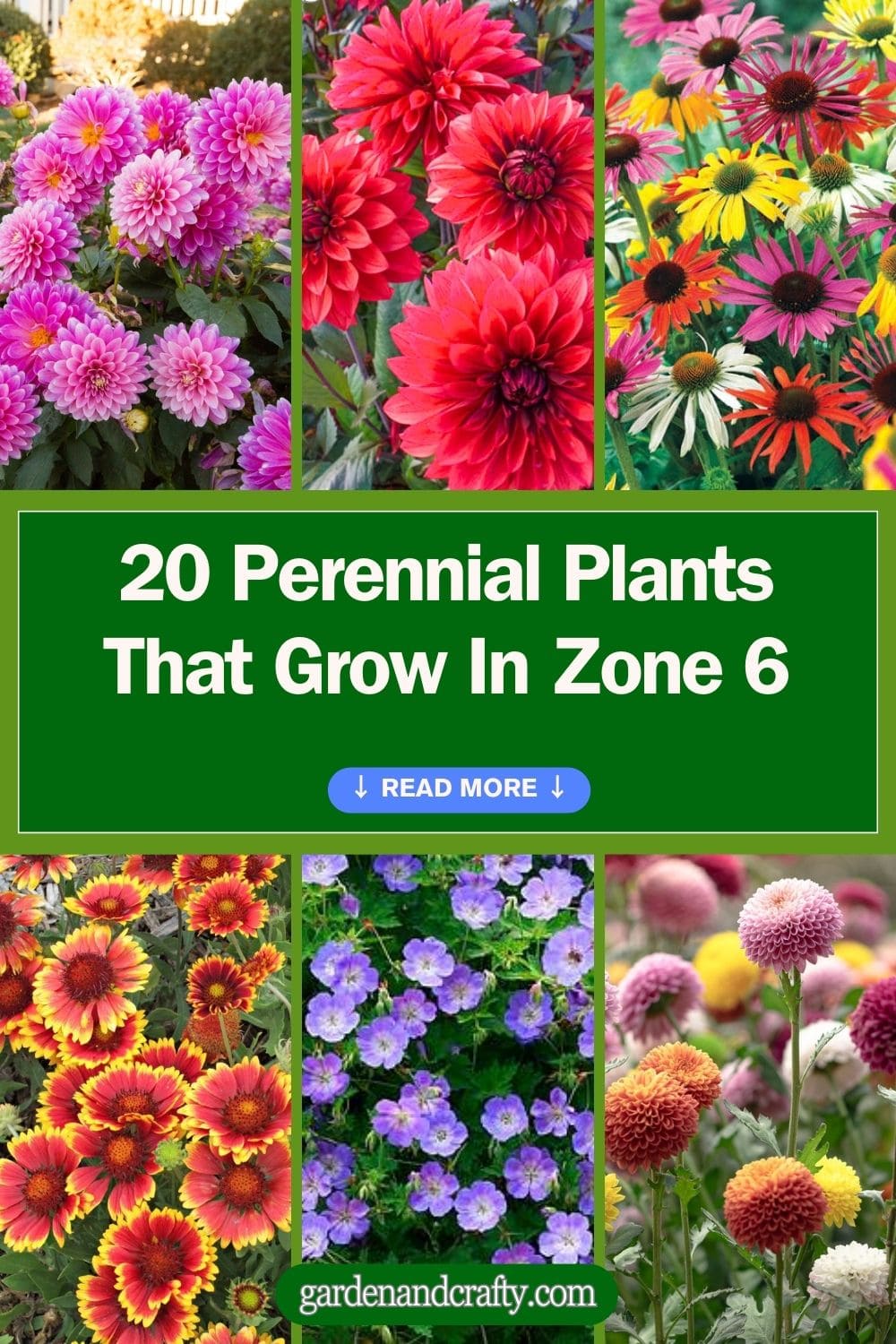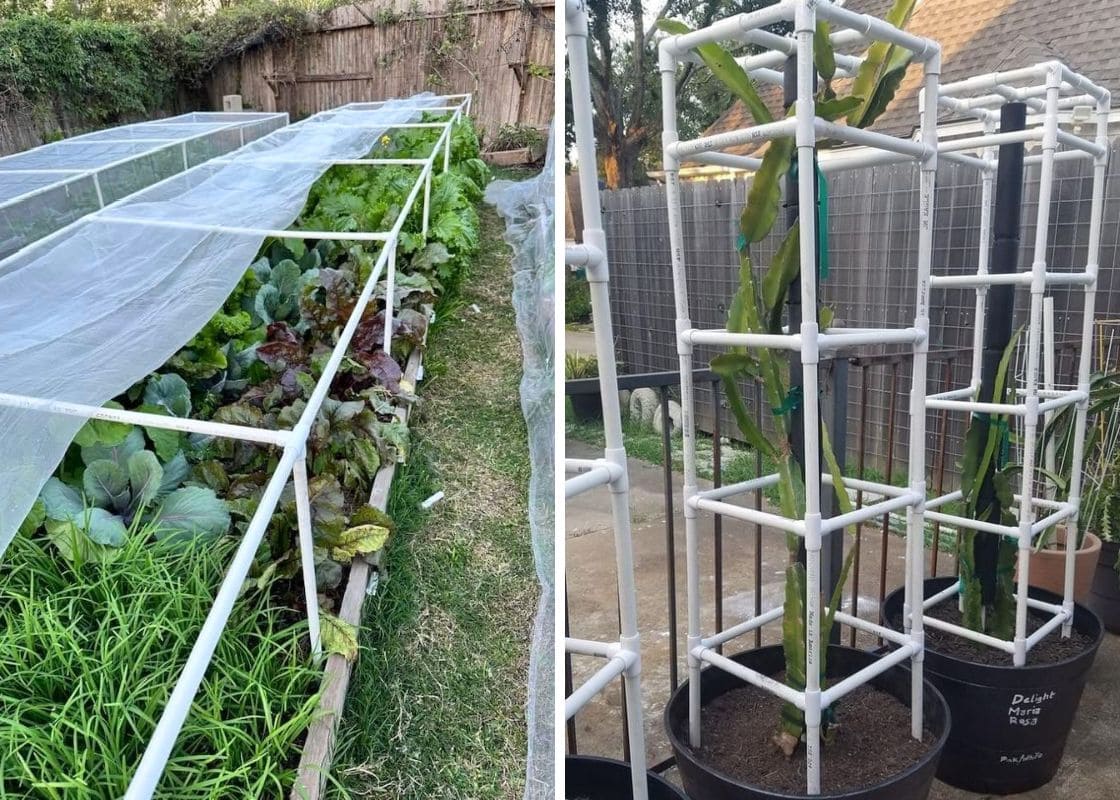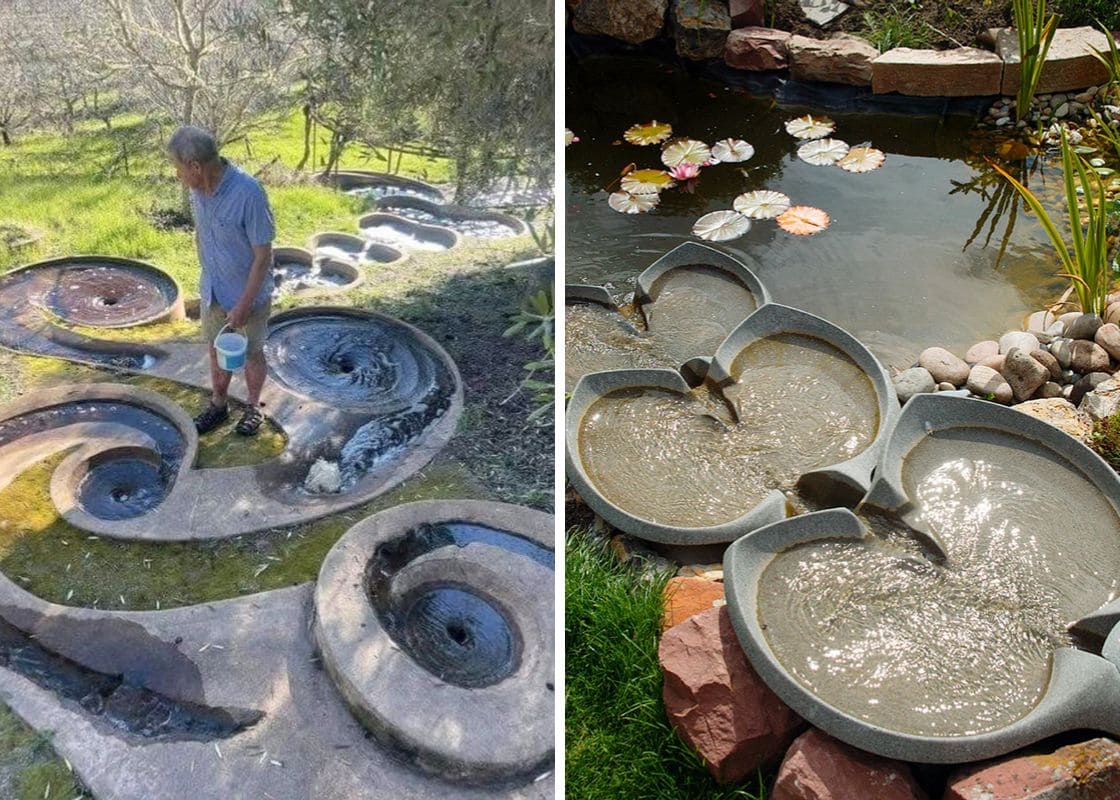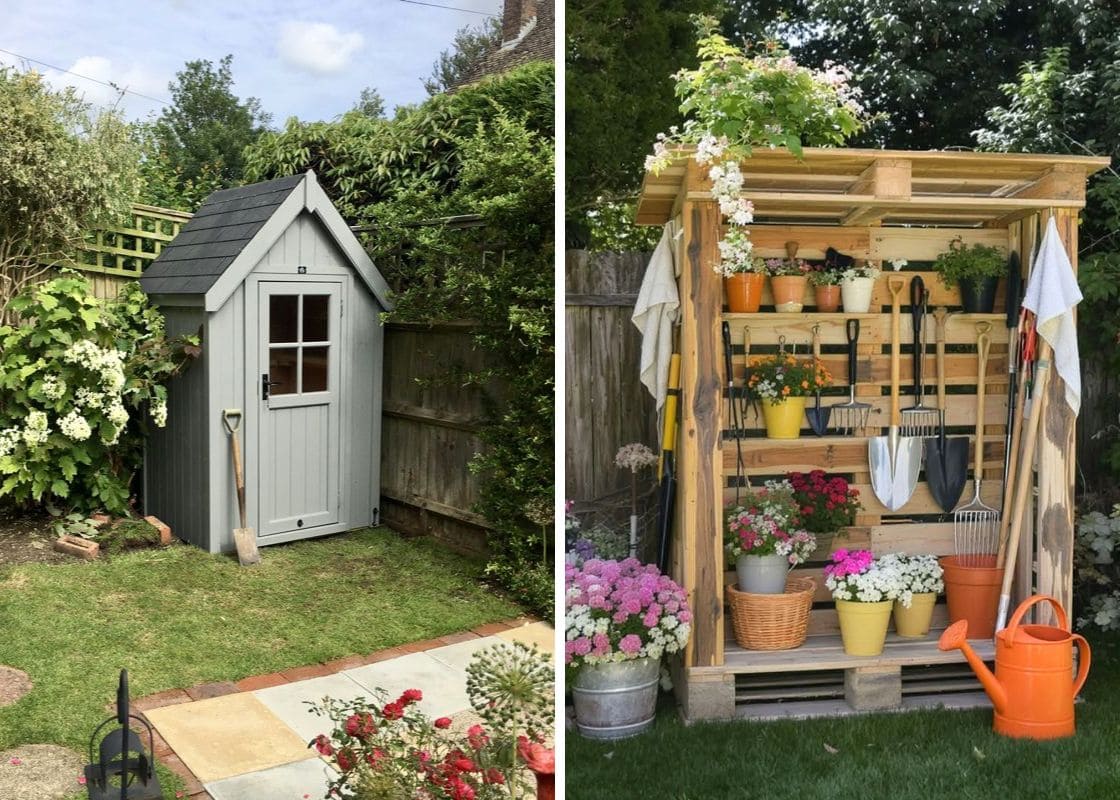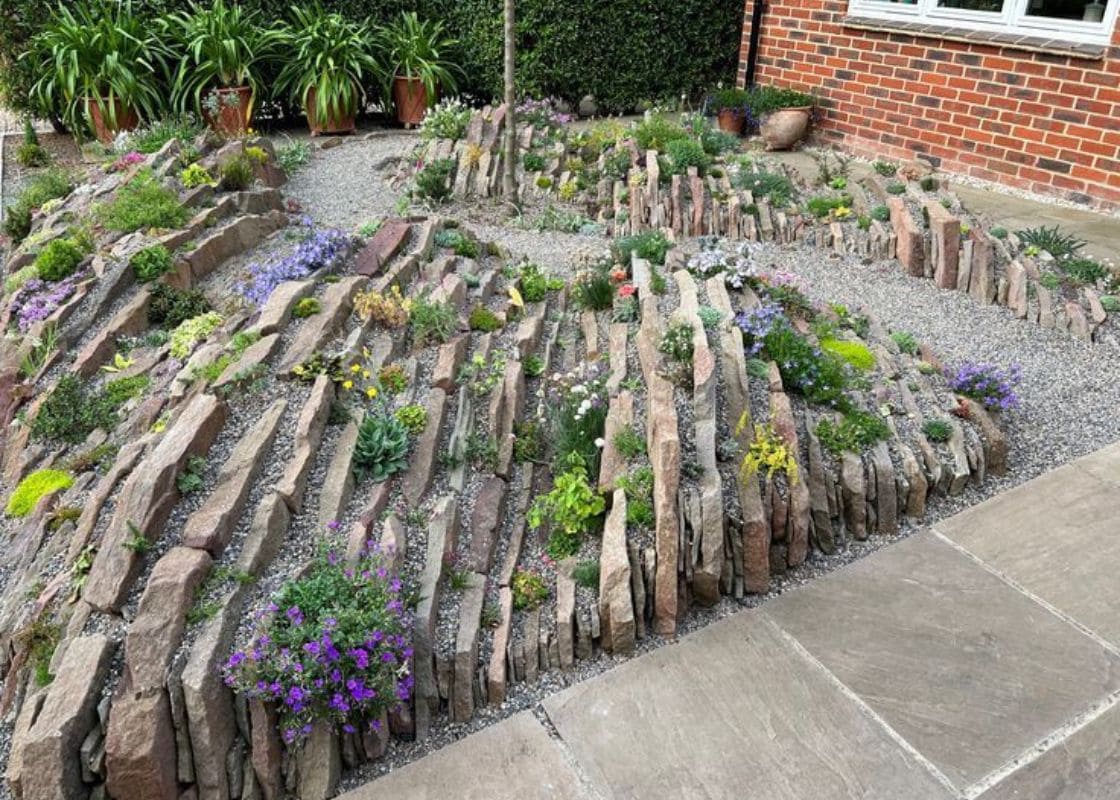USDA hardiness zone 5 covering parts of the northern United States is known for its challenging climate, with winter temperatures plunging to -20°F to -10°F.
Gardeners here face seasonal weather patterns like cold winters, warm summers, and variable frost dates that typically range from early May to late October.
For successful gardening in Zone 5, it’s crucial to choose plants that can withstand these climatic conditions.
Apart from understanding soil types, sunlight and watering requirements, growing perennial flowers will be a perfect choice for enjoying blooms all year around.
Purple Coneflower (Echinacea purpurea)
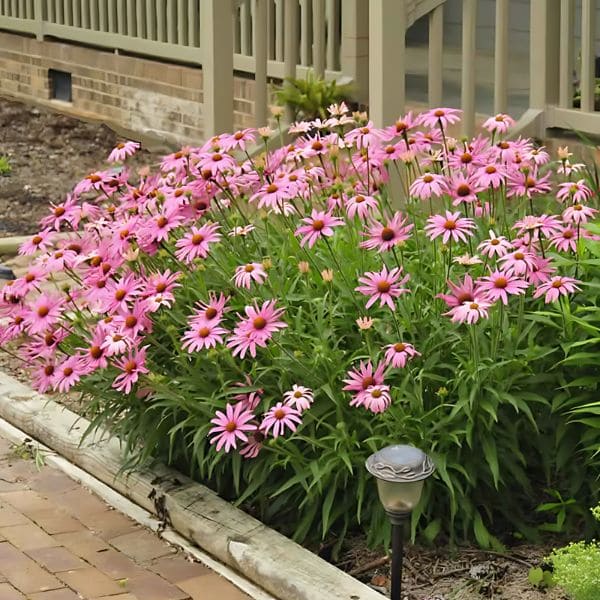
- Mature Size: 2-5 feet tall
- Bloom Time: Summer to early fall
- Sun Exposure: Full sun
- Soil Requirement: Well-drained soil
Purple coneflower stands tall at 2-5 feet and blooms from summer to early fall. It boasts large, vibrant purple-pink flowers with distinctive cone-shaped centers.
This plant thrives in well-drained soil and full sun. Once established, purple coneflower is drought-tolerant and requires minimal watering.
Its hardiness in USDA Zone 5 is backed by its ability to survive harsh winter temperatures, thanks to its deep roots and sturdy structure.
Additionally, it can attract bees and butterflies. Several studies suggest that echinacea contains active substances that boost immune function, relieve pain, and antioxidant effects…
Daylily (Hemerocallis spp.)

- Mature Size: 1-3 feet tall
- Bloom Time: Early summer to fall
- Sun Exposure: Full sun to partial shade
- Soil Requirement: Well-drained soil
Belonging to the Asphodelaceae family, daylilies are perennials with bright yellows and oranges to deep reds and purples. Typically, they grow to a height of 1-3 feet, blooming from early summer through fall.
Daylilies thrive in well-drained soil and flourish in both full sun and partial shade. They prefer moderate watering, especially during dry spells.
The plant’s robust root system helps it withstand cold winters in Zone 5, while its drought tolerance ensures it remains vibrant during the warmer months.
English Lavender (Lavandula angustifolia)

- Mature Size: 1-3 feet tall
- Bloom Time: Late spring to early summer
- Sun Exposure: Full sun
- Soil Requirement: Well-drained soil
English lavender grows to a height of 1-3 feet and shows soft purples and blues. It blooms from late spring to early summer filling the air with its signature fragrance.
Lavender thrives in well-drained soil and requires full sun to achieve its best flower production.
For gardeners in Zone 5, English Lavender is an excellent choice due to its cold-hardiness and ability to withstand winter temperatures.
English lavender is used for potpourris and essential oils. Besides, it attracts beneficial insects like bees and butterflies enhancing the ecological health of your garden.
Garden Phlox (Phlox paniculata)
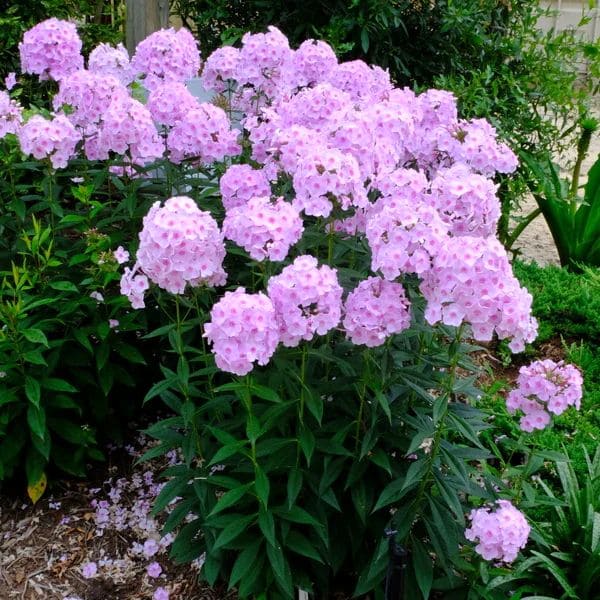
- Mature Size: 2-4 feet tall
- Bloom Time: Mid-summer to early fall
- Sun Exposure: Full sun to partial shade
- Soil Requirement: Loamy, well-drained soil
Garden phlox belongs to the Polemoniaceae family, blooming from mid-summer to early fall. It reaches heights of 2-4 feet and offers pink, white, red, and purple.
This versatile plant thrives in loamy, well-drained soil and enjoys full sun but can also tolerate partial shade.
To keep your garden best, deadhead blooms to encourage continuous flowering. Also, you can prevent powdery mildew by proper spacing and air circulation.
Garden phlox works well in borders, and cottage gardens. Gardeners in zone 5 are looking to it because of its long blooming period and vivid colors in the fall.
Woodland Sage (Salvia nemorosa)
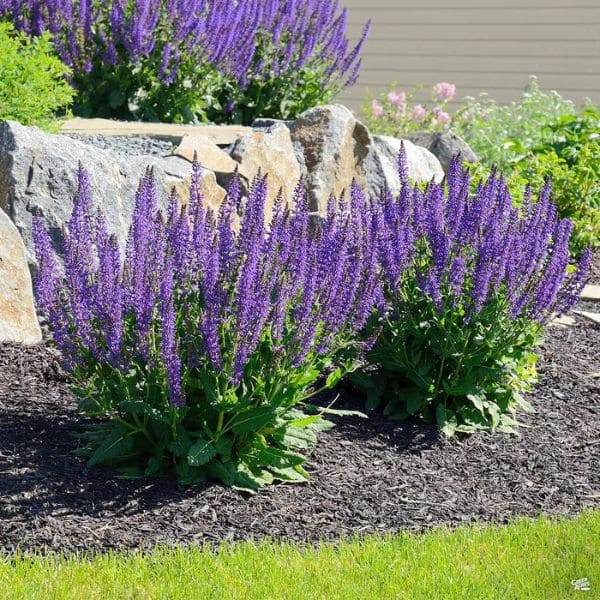
- Mature Size: 1-2 feet tall
- Bloom Time: Late spring to early summer
- Sun Exposure: Full sun
- Soil Requirement: Well-drained soil
Woodland sage is a part of the Lamiaceae family. It blooms from late spring to early summer and produces stunning spikes of blue, purple, or violet flowers.
This plant thrives in well-drained soil and requires full sun. It is also drought-tolerant once established, so it is perfect for Zone 5’s varying weather conditions.
Regular pruning after the first bloom encourages a second wave of flowers. Its suitability for Zone 5 is proven by its ability to withstand cold temperatures and rebound each spring.
One of the standout benefits of woodland sage is its medicinal uses. Its leaves have been used in Turkish medicine to stop bleeding by applying externally.
Threadleaf Coreopsis (Coreopsis verticillata)
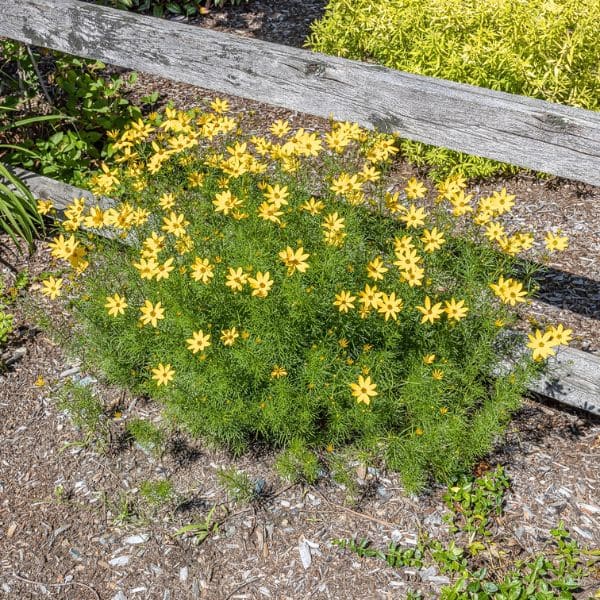
- Mature Size: 1-3 feet tall
- Bloom Time: Early summer to fall
- Sun Exposure: Full sun
- Soil Requirement: Well-drained soil
Threadleaf coreopsis, sometimes called “Tickseed,” belongs to the Asteraceae family. This plant produces bright yellow flowers that bloom from early summer through fall.
It thrives in well-drained soil and requires full sun. Threadleaf coreopsis is relatively low-maintenance, needing only moderate watering.
Especially, this plant can endure the cold winter temperatures, so it is suitable for Zone 5.
In the garden, threadleaf coreopsis pairs well with coneflowers, and salvias giving exotic landscape for borders, wildflower gardens, and cottage gardens.
Black-eyed Susan (Rudbeckia fulgida)
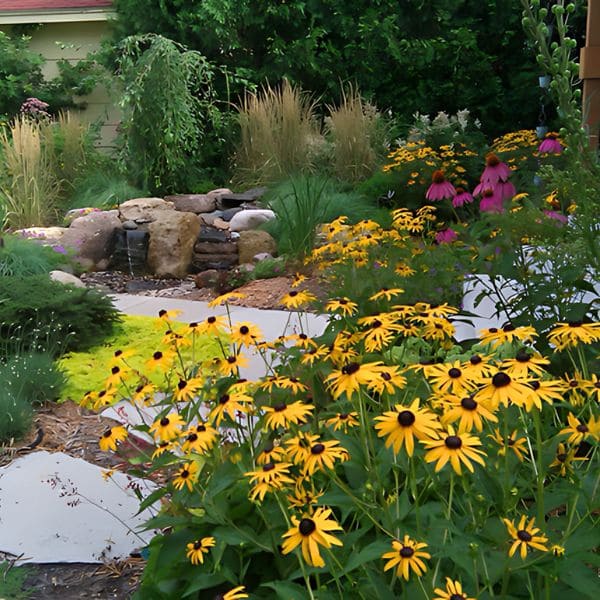
- Mature Size: 2-3 feet tall
- Bloom Time: Mid-summer to fall
- Sun Exposure: Full sun
- Soil Requirement: Well-drained soil
Black-eyed susan belongs to the Asteraceae family. This plant blooms from mid-summer to fall and boasts bright yellow petals with a distinctive dark brown center.
This hardy perennial thrives in full sun and well-drained soil, though it is adaptable to a range of soil types, including clay and sandy soils.
It requires moderate watering, especially during dry spells, but once established, it’s quite drought-tolerant.
This resilience makes it an excellent choice for Zone 5, where temperatures can fluctuate significantly.
Showy Stonecrop (Sedum spectabile)
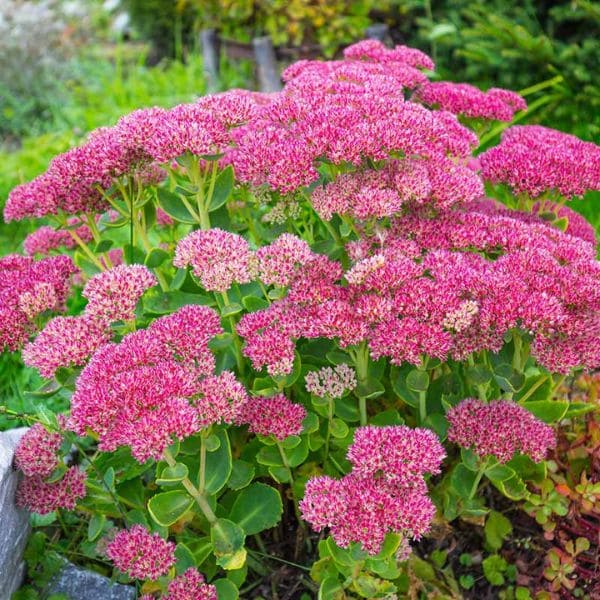
- Mature Size: 1-2 feet tall
- Bloom Time: Late summer to fall
- Sun Exposure: Full sun to partial shade
- Soil Requirement: Well-drained soil
Belonging to the Crassulaceae family, showy stonecrop is known for its dense clusters of star-shaped flowers, which bloom in late summer through fall.
Thriving in well-drained soil, showy stonecrop prefers full sun but can tolerate partial shade. I
Its ability to withstand cold temperatures and poor soil conditions makes it exceptionally well-suited to Zone 5, where winters can be harsh and unpredictable.
Showy stonecrop can thrive with little care. Its upright, fleshy foliage adds a unique texture for rock gardens, borders, and container gardens.
Chinese Astilbe (Astilbe chinensis)
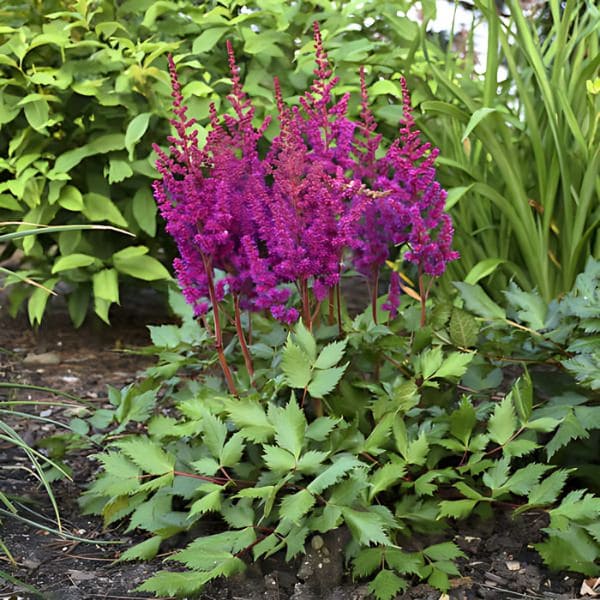
- Mature Size: 1-3 feet tall
- Bloom Time: Late spring to early summer
- Sun Exposure: Partial shade to full shade
- Soil Requirement: Moist, well-drained soil
Chinese astilbe is known for its feathery plumes of delicate flowers. Blooming from late spring to early summer, it offers a soft palette of pinks, purples, and whites.
To maintain your Chinese astilbe, apply mulch to retain soil moisture and keep roots cool, and divide the clumps every few years to promote vigorous growth.
This perennial is well-suited to Zone 5 due to its hardiness and ability to withstand the cold winters typical of this zone.
Canadian Columbine (Aquilegia canadensis)

- Mature Size: 1-2 feet tall
- Bloom Time: Late spring to early summer
- Sun Exposure: Partial shade to full sun
- Soil Requirement: Well-drained soil
Canadian columbine is a native plant producing unique, nodding red and yellow flowers like little lantern shapes that bloom from late spring to early summer.
This plant is well-suited for Zone 5, thanks to its adaptability to cooler climates and its ability to thrive in partial shade, making it perfect for those tricky spots in your garden.
You can deadhead spent blooms to encourage new growth and reseeding. This plant readily self-seeds, allowing it to naturalize and spread gracefully over time.
Bleeding Heart (Dicentra spectabilis)
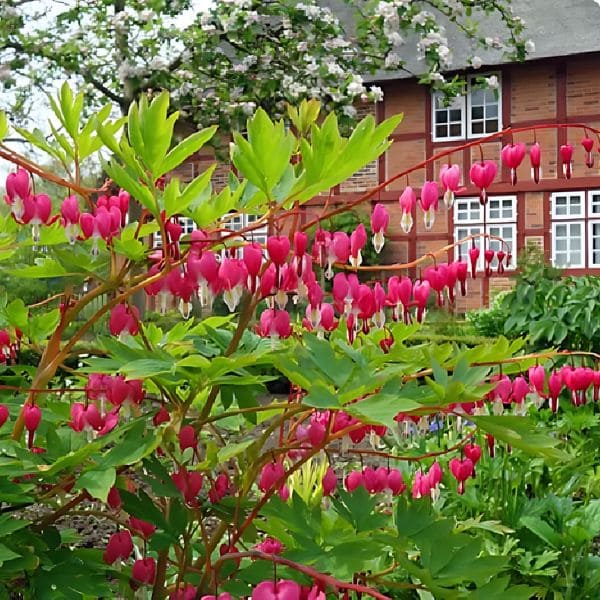
- Mature Size: 2-3 feet tall
- Bloom Time: Late spring to early summer
- Sun Exposure: Partial shade to full shade
- Soil Requirement: Moist, well-drained soil
Bleeding heart is a part of the Papaveraceae family and celebrated for its heart-shaped pink and white flowers that dangle gracefully from arching stems.
It is also called “Lady-in-a-Bath,” inspired by the flower’s unique shape that resembles a lady taking a bath when turned upside down.
Growing bleeding heart in Zone 5 is a wise choice because it thrives in partial shade, preferring the cooler, filtered light that many Zone 5 gardens offer.
Note that all parts of this plant are toxic if ingested, so be careful if you have pets or young children.
Hosta (Hosta spp.)

- Mature Size: 1-2 feet tall
- Bloom Time: Mid-summer
- Sun Exposure: Partial shade to full shade
- Soil Requirement: Moist, well-drained soil
The most striking feature of hosta is the wide variety of leaf colors and patterns, ranging from deep greens to vibrant yellows and blues.
Zone 5 is perfect for Hostas due to their ability to withstand cold winters. Their deep roots and hardy leaves can survive frost and regenerate each spring, ensuring a lush garden year after year.
Hostas are perfect for borders and as focal points in shaded areas. While hostas are not toxic, they can cause mild stomach upset if ingested by pets.
Bearded Iris (Iris germanica)
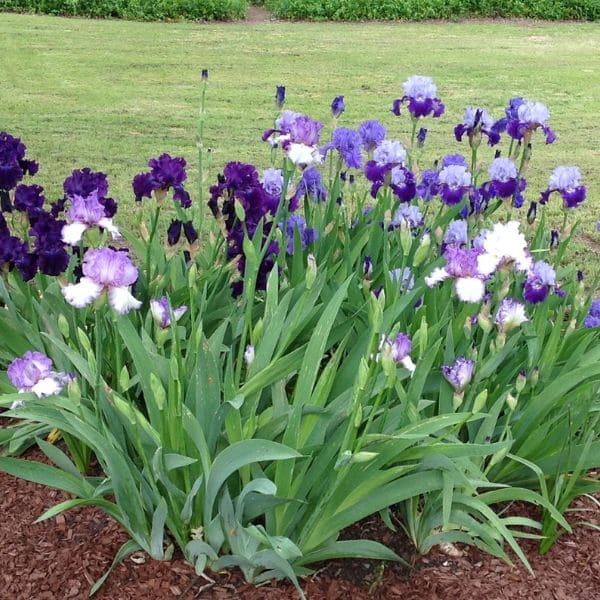
- Mature Size: 2-3 feet tall
- Bloom Time: Late spring to early summer
- Sun Exposure: Full sun to partial shade
- Soil Requirement: Well-drained soil
The bearded iris is also known as “German Iris”. It blooms from late spring to early summer with large, ruffled flowers covered by blues, purples, yellows, and whites.
Bearded Irises thrive in Zone 5, thanks to their robust rhizomes that store nutrients and water, enabling the plant to endure cold winters and bounce back each spring.
Deadheading spent blooms encourages the plant to focus energy on developing healthy rhizomes rather than seed production.
Lady’s Mantle (Alchemilla mollis)
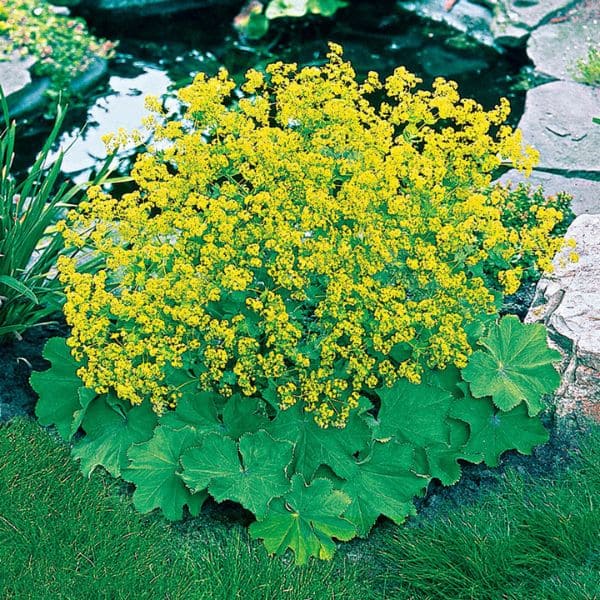
- Mature Size: 1-2 feet tall
- Bloom Time: Late spring to early summer
- Sun Exposure: Partial shade to full sun
- Soil Requirement: Moist, well-drained soil
Lady’s mantle is adored for its soft, velvety leaves and clusters of delicate, chartreuse-yellow flowers that bloom from late spring to early summer.
Its foliage, with its scalloped edges, catches morning dew beautifully. In garden design, lady’s mantle is perfect for borders, woodland gardens, and cottage gardens.
Scientific research shows that lady’s mantle’s root system is adept at surviving colder temperatures as low as -20°C, which is crucial for enduring Zone 5 winters.
To maintain the lady’s mantle, cut back the foliage after flowering to encourage fresh growth and prevent self-seeding.
Bee Balm (Monarda didyma)
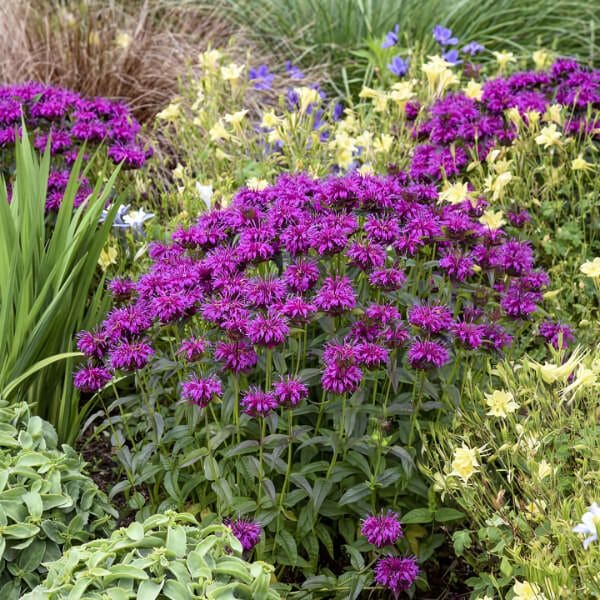
- Mature Size: 2-4 feet tall
- Bloom Time: Mid-summer to early fall
- Sun Exposure: Full sun to partial shade
- Soil Requirement: Moist, well-drained soil
Bee balm features striking, tubular flowers with red, pink, purple, and white. It blooms from mid-summer to early fall and acts as a magnet for bees and butterflies.
This plant is well-suited to Zone 5 because of its hardiness and ability to withstand the region’s temperature fluctuations and moderate drought conditions.
Its deep roots help it endure cold winters, while its sturdy stems support abundant summer blooms.
Besides ornamental value for borders, bee balm is also used in traditional remedies for colds and digestive issues. The leaves can be used to make a soothing tea.
Yarrow (Achillea millefolium)
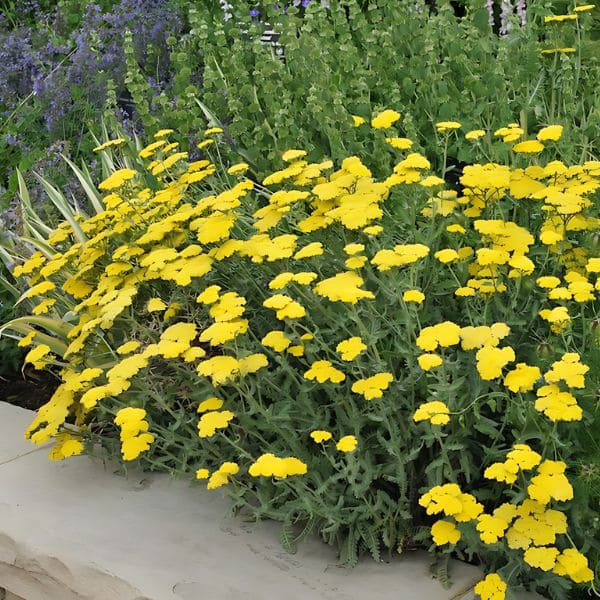
- Mature Size: 1-3 feet tall
- Bloom Time: Late spring to early fall
- Sun Exposure: Full sun
- Soil Requirement: Well-drained soil
Yarrow is also called “Achillea” derived from the Greek hero Achilles, who is said to have used the plant to treat his soldiers’ wounds during the Trojan War.
This plant is renowned for its clusters of tiny, daisy-like flowers that bloom from late spring to early fall. They are white, yellow, and red, while leaves are feathery, fern-like.
Yarrow is perfectly suited for Zone 5 due to its robust nature and ability to thrive in well-drained soil with minimal watering once established.
Also, its deep root system allows it to endure the cold winters typical of Zone 5, ensuring it returns year after year with minimal fuss.
Foxglove Beardtongue (Penstemon digitalis)
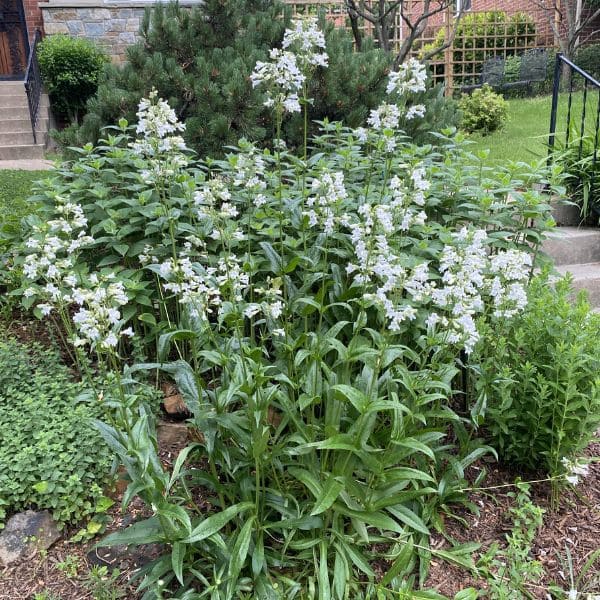
- Mature Size: 2-3 feet tall
- Bloom Time: Late spring to early summer
- Sun Exposure: Full sun to partial shade
- Soil Requirement: Well-drained soil
Foxglove beardtongue is admired for its tubular, bell-shaped flowers that bloom white, pink, and light purple from late spring to early summer and lance-shaped green leaves.
This resilient plant prefers well-drained soil and can flourish in both full sun and partial shade. It is also relatively drought-tolerant and suitable for Zone 5.
While beautiful, it’s important to note that all parts of the plant are toxic if ingested, so caution should be taken around pets and small children.
Catmint (Nepeta x faassenii)
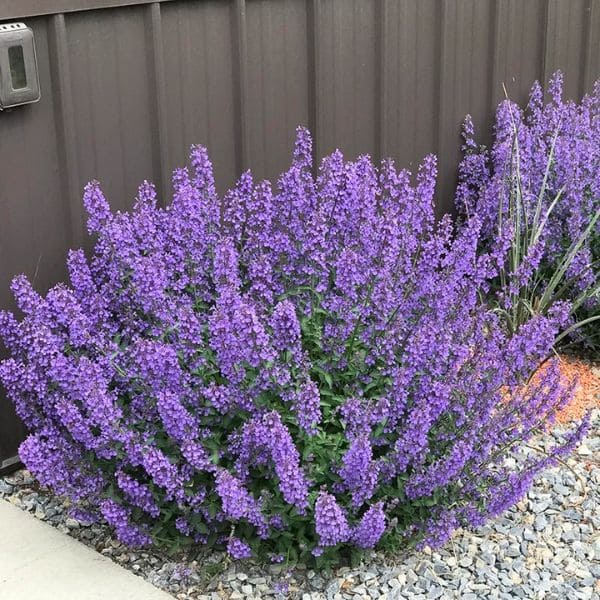
- Mature Size: 1-2 feet tall
- Bloom Time: Late spring to early fall
- Sun Exposure: Full sun to partial shade
- Soil Requirement: Well-drained soil
Catmint features charming, lavender-blue flowers that bloom profusely from late spring to early fall and features grey-green, aromatic leaves.
Catmint’s suitability for Zone 5 comes from its remarkable resilience to cold temperatures and its ability to thrive in a variety of soil conditions.
In garden design, this plant is perfect for borders and cottage gardens. It can pair with roses, lavender, and other sun-loving perennials creating a harmonious display.
Blue False Indigo (Baptisia australis)
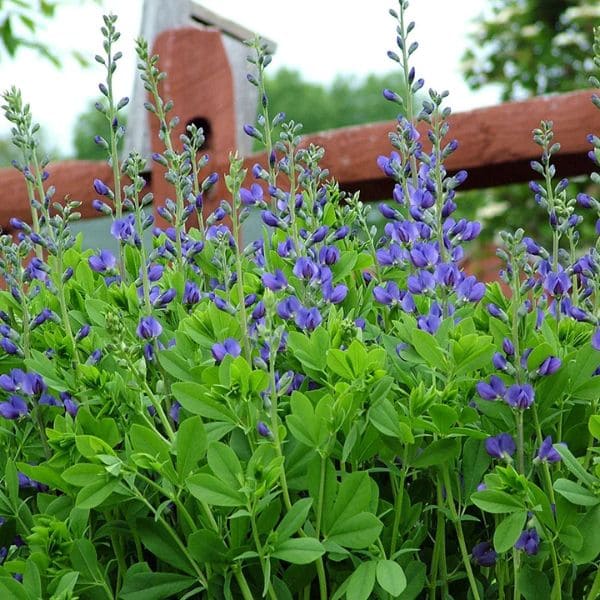
- Mature Size: 3-4 feet tall
- Bloom Time: Late spring to early summer
- Sun Exposure: Full sun to partial shade
- Soil Requirement: Well-drained soil
Blue false indigo is celebrated for its spires of deep blue to violet flowers that bloom from late spring to early summer with attractive, bluish-green leaves.
One reason this plant thrives in Zone 5 is its deep, extensive root system, which not only anchors the plant firmly but also allows it to survive the cold winters.
Blue false indigo has nitrogen-fixing ability enriching the soil and benefiting neighboring plants. Besides, its long-lasting flowers and attractive foliage make it a garden favorite.
This flower is perfect for meadow gardens. Its botanical name, Baptisia, is derived from the Greek word for “to dip,” referencing its historical use in making blue dye.
Allium (Allium giganteum)

- Mature Size: 1-4 feet tall, depending on variety
- Bloom Time: Late spring to early summer
- Sun Exposure: Full sun
- Soil Requirement: Well-drained soil
Alliums own their striking, spherical flower heads. They bloom from late spring to early summer with various colors while the leaves are green or greyish-green.
This plant thrives in full sun to partial shade and prefers well-drained soil, making it well-suited for Zone 5’s varied conditions.
Alliums are particularly hardy and can withstand the colder winters typical of this zone.
Their underground bulbs are well-protected from frost, ensuring their survival and regrowth each year.
